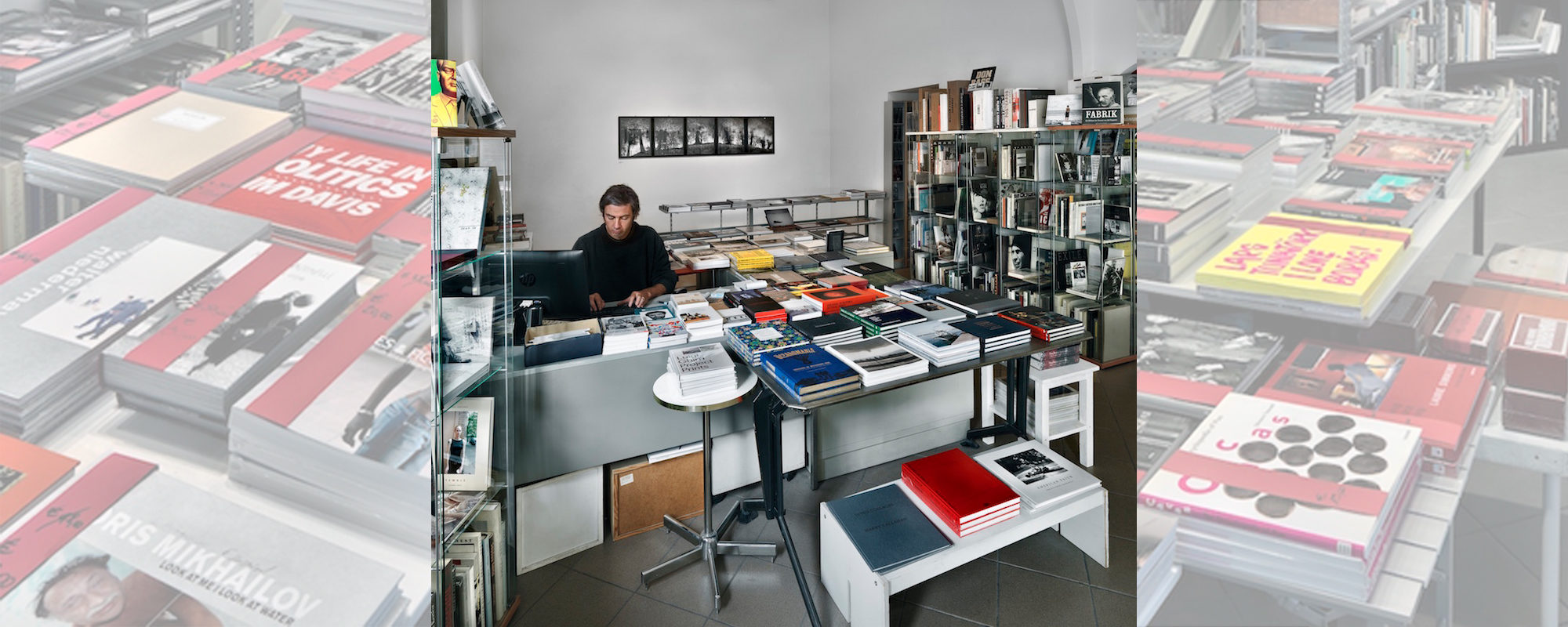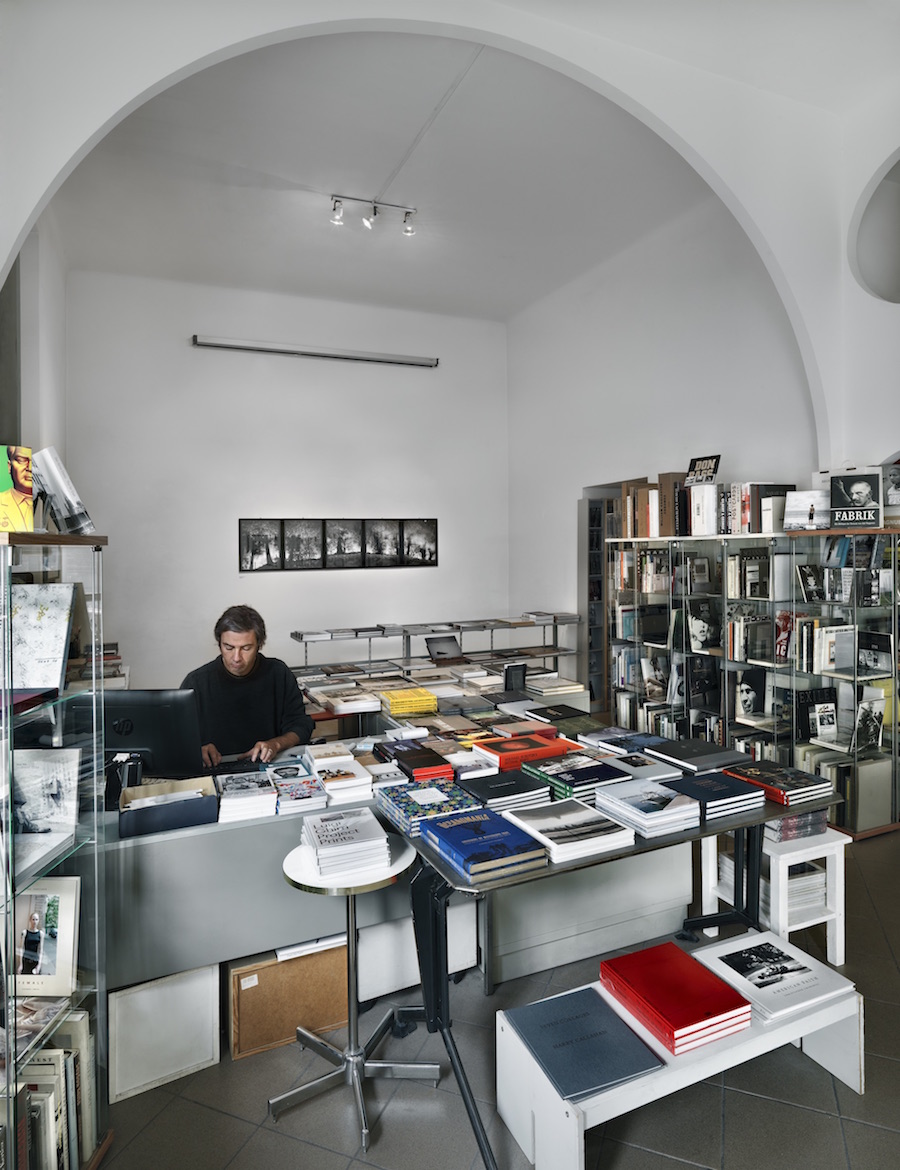“We wanted to show ourselves that we could restart from nothing and realize a dream. Photobooks were basically unavailable in Milan…”
This is the first post in a series of posts about photography bookshops during the time of quarantine. There are a number of people behind the scenes who work tirelessly to promote photography and to keep it in the cultural spotlight that do not always get the recognition for keeping the scene afloat and progressive. The bookstores have undergone tremendous change in the last 20 years and its physical shops that help keep your books in the hands of people from outside of the scene. This is super important as it widens the net for what we do while also providing us with an outlet for our projects.
BF: Micamera is based in Milan. It is a bookstore that specializes in photography, but also offers workshops and has an international following. When did you start Micamera? Did you have a background in photography? There are two of you correct?
GZ: I met Flavio in a record shop at the end of the year 2000, it was around Christmas time and Metropolis Dischi was a Mecca for both of us: one of those places where you do not simply buy a record, but also nourish your soul and knowledge. We had been going there regularly for years (but had strangely never met or noticed each other). Later, imagining our bookshop, we were much inspired by Metropolis and its way of spreading and cultivating knowledge and passion.
Next time we met was mid 2001, I was in charge of the organization of a contemporary music festival (that in 2001 was dedicated to a label called ECM – and I was supposed to move to Germany in fall to work for them) and Flavio ran a place called Sonora that was known by musicians as one of the best places for rehearsals, with a recording studio and a service agency. To make a long story short, in September I was pregnant with our first child and never moved to Germany. Sonora was victim of a fraud and closed within a few months and in summer 2002 I did another edition of the Festival and we went to live in the countryside – with the baby. It was in the golden light of September along the river Trebbia that we had the idea of opening a photobookstore. Honestly, there was no reason why. Flavio had photographed some concerts for a music magazine and a few album covers, photography was definitely a passion of his – he was good, but I would say that the main reason for Micamera was that we wanted to build something new, something that would be a common project. We wanted to show ourselves that we could restart from nothing and realize a dream. Photobooks were basically unavailable in Milan (there was a bookstore called Agorà in Turin, with a small gallery as well, but sadly it closed shortly afterwards. I still remember buying Winogrand’s 1964 there.
In Milan, we had a photography section at Hoepli and Corso Como 10) and prices were absolutely crazy, some books would cost twice as much as listed or even more. You must think that this was much before Amazon – that landed in Italy only in 2011 – and distribution still worked through a complicated network of agents. Initially we thought we would live selling second hand photobooks on line and living along the river. It went very differently of course. We were back in Milan in fall 2002, I was working at La Scala and doing translations, Flavio started studying publishers’ catalogues and buying books. I remember we lived in a tiny apartment in the suburbs. My help was initially contacting foreign publishers and trying to understand which would have been the best way to buy. So foreign reps, when in Milan, went to the city centre to Hoepli and Corso Como and typically called – completely lost – trying to reach us. They surely did not expect a tiny apartment in the suburbs. We went to book fairs and to Arles.
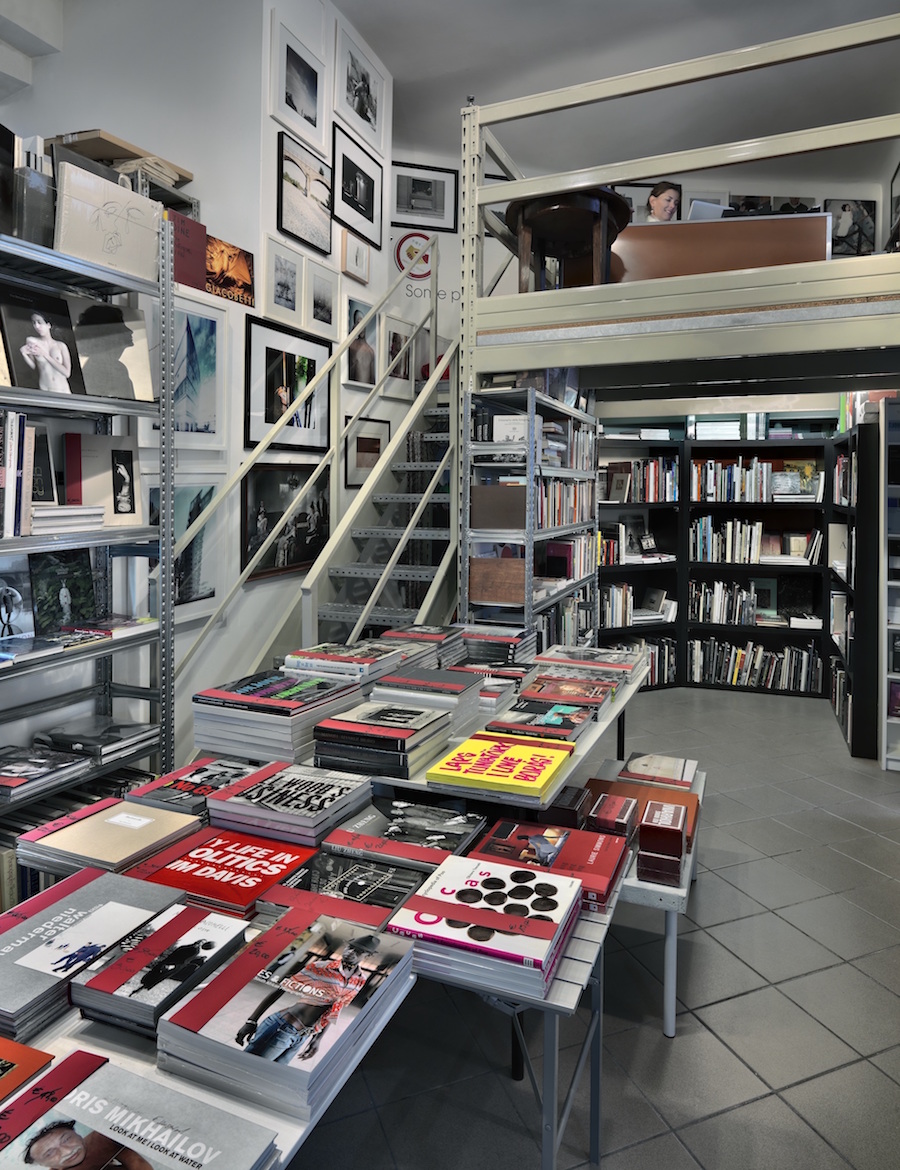
I will never forget looking at Markus Schaden’s stand and thinking that it looked like a beautiful and successful life. The Arles book section was still only at the Espace Van Gogh. Anyway, we made a loan and opened a physical shop (23 square meters, no heating) in fall 2003 and then things evolved quite quickly. We were hungry, spent days and nights looking at books, looking at shops on line, and working our ass off. We wanted to be good and studied. Some books I will never forget – like the Book of 101 Books (Andrew Roth) that we had bought from Strand in NY. For a mistake, they had sent the special edition and I still remember opening the package and feeling so happy: for the book, and for the gift. Very soon we realised that selling contemporary photography books meant educating the audience (who would have bought them otherwise?) so we started immediately to organise and host talks and signings (this, I am very proud to say, we were the first ones doing). The shop was too small for that, but we had a very nice neighbour who owned a bigger furniture shop just next door – which was where the first talks were held. He has closed now, but we’re still good friends. And then, Flavio was already good at choosing books to buy – I guess it is as simple as that – and I was good in organising the working structure, addressing publishers directly, creating the network. We did not know anybody and this was a true gift. No relationships to take care of, just our way of doing things, a fresh look. It made things a little harder on one side, but simpler on the long run: the photography world in Italy was a little suffocating, and we could just ignore it. We didn’t even know them, our judgement was based on content and facts. We moved into the new, and current, location in 2006, right after our second child. By then I had already learned a lot, and we started working also as a gallery. Micamera’s life after that is similar to how it is today, except that of course we have learned over time and still do, so our knowledge grows. Personally, I have studied on books and through the workshops I have organised: I had exactly the teachers I wanted, because it was me inviting them. Quite a privileged position.
“I will never forget looking at Markus Schaden’s stand and thinking that it looked like a beautiful and successful life. The Arles book section was still only at the Espace Van Gogh. Anyway, we made a loan and opened a physical shop (23 square meters, no heating) in fall 2003 and then things evolved quite quickly”.
Most authors, especially at the beginning, were linked to Nazraeli Press, a publisher that has been very important for Micamera. They trusted us from the very beginning and we built a relationship that has been fundamental for us. Our ‘special’ relationship with American photography is a consequence of this, as well – as much as from the fact that Italian photography owes a lot to American photography (think of Ghirri and Guidi, for instance). For many years it has been only Flavio and myself. But things have changed (we have also divorced, working together is probably not the best thing to do for a couple) and we have some collaborators, mostly doing various jobs and among these, working with us. We are very proud of our staff – now Sofia Masini, Giorgia Zaffanelli and Cesare Castelli. We have also managed bookshops for public institutions in Milan, so the staff has been growing, and changing, over time.
BF: Very Very interesting. I was going to ask about the American angle. I guess I watch you “taste” unfold and find that we have some common interests in both Italian and American books from Tim Carpenter, to John Gossage and Guido Guidi. Being that you did not have any real approach to photography before opening the shop, how did that come about? I mean, you are heavily involved right now. You guys are running workshops and are 100% on top of contemporary image-making? I find it great that you can come from outside and get this level of knowledge, but its pretty rare. Would you say that you focus on anything in particular? You are running an Italian photobook homage now as we speak on social media. I guess that is important, but I also know that you like Swedish imagery by Gerry Johansson. Is there a particular vision that you have for the store and work?
GZ: The American angle – I like this expression – was the most natural evolution. If we imagine Italian masters as an island the first bridge to the nearest imaginary island leads to American classics: Walker Evans, Robert Adams, Lee Friedlander, Stephen Shore, and then the New Topographers, and then John Gossage … and more recently authors like Mark Steinmetz, Raymond Meeks, Tim Carpenter…of course then you can’t avoid starting following threads that become much more interestingly complicated, leading elsewhere and covering other authors, countries, influences (think of Eugène Atget and August Sander for instance) and then…well I guess you can easily imagine how, for us, because we were learning and discovering connections, the world of photography seemed to be this amazing beautiful universe and our feeling very similar to that of a child in an enormous candy shop.
I think our attitude towards photography is just the same our approach to music: we love contemporary classics but also jazz, hip hop, country, punk, electronic…and also the most recent pop song. Not all of them of course, but we look at everything and buy what we think is good. We try to be aware and careful. Our taste changes, evolves, goes through different phases. We recently dedicated a pop-up exhibition to British photography (curated by Ken Grant and Tracy Marshall), with a book section that was really interesting; there was a focus on RRB (main publishers, like for instance MACK, are always broadly present in the bookshop and we take these pop-up opportunities to explore other catalogues), and for this event I bought a selection of publications from Café Royale and found them really good, I wish I could do a similar operation in Italy. Many times we have thought of giving up dealing with new publications and focusing on the rare titles (which would make much more sense economically) and every time we cannot resist buying the new titles – very much for the pleasure of having and showing them.
There are so many awesome books around. If I had to describe our catalogue in a few words, I would say that we have a focus on Italians (of course) and then Americans – when American collectors or book lovers visit the shop in Milan, they very often tell us that it is rare to find such a broad and careful selection of titles even in the US. This is also due to the fact that some books have remained unsold for years in Milan and we have been open for almost twenty years now, so things have been layering as well. But it is also a matter of attitude: we do not focus only on the most recent ‘hype’ publication and successfully regularly buy and promote ‘older’ titles that had not gained the attention they deserved. A recent good example is Sam Contis’ Deep Spring: published in 2017, remained pretty unsold for some time at Micamera and is one of our bestsellers now. Of course this is also due to the recent Day Sleeper, but that book is amazing in itself. Speaking of MACK – very good publisher – I am looking forward to the upcoming Lew Thomas publication. We hosted an exhibition by Lew Thomas in 2007 curated by a still quite unknown Francesco Zanot and published also a small catalogue. I am happy to see MACK is doing the artist justice – great work. Another example is Mark Steinmetz. We approached him when the South Trilogy was released by Nazraeli and we fell in love. He was totally unknown in Italy and after some hesitation we decided to invite him for an exhibition that we later proposed to the SiFest Photography Festival in Savignano. Mark accepted our invitation and we are extremely proud to have organised and curated his first exhibition in Europe back in 2010. Mark is still one of our favourite authors and will hopefully be back to Micamera in fall. Our further exhibition and workshop program (the two things are strictly connected) in 2020 – now on hold as the virus is still spreading – was meant to be – and hopefully will be, with some delay: Aaron Schuman – Jason Fulford – Gus Powell and Mark Steinmetz. I couldn’t have been happier with the selection.
Books and exhibitions are so strictly connected to us, of course. Many authors are also publishers, or lead to different publishers. Think of Jason Fulford: his imprint is J&L, but his work was first published by The Soon Institute and now by MACK: when we host an author we follow all this threads and connections. So the author is American, but the previous publisher Italian, the current publisher British and they all have different catalogues. At the end of 2019 we hosted Jeff Mermelstein and the book released by Aron Morel. I often think of our events as connections of things. Going back to the bookshop only, Micamera has also a fairly good Japanese section, for instance. And whatever we like. We have always tried to keep the ‘important’ books in the shop, those books that anybody approaching photography should have, a good back list. We generally do not have zines, and we gave up the Italian essay section that we used to have when we started. Answering your question on Gerry Johansson, of course there’s a lot of American references in his work; Gerry, who is also often in Italy and very close to Guido Guidi, approached photography as a teenager in the US, and many of his references are American. But we hosted also authors like Paul Kooiker or – mentioning something completely different – Jessica Backhaus.
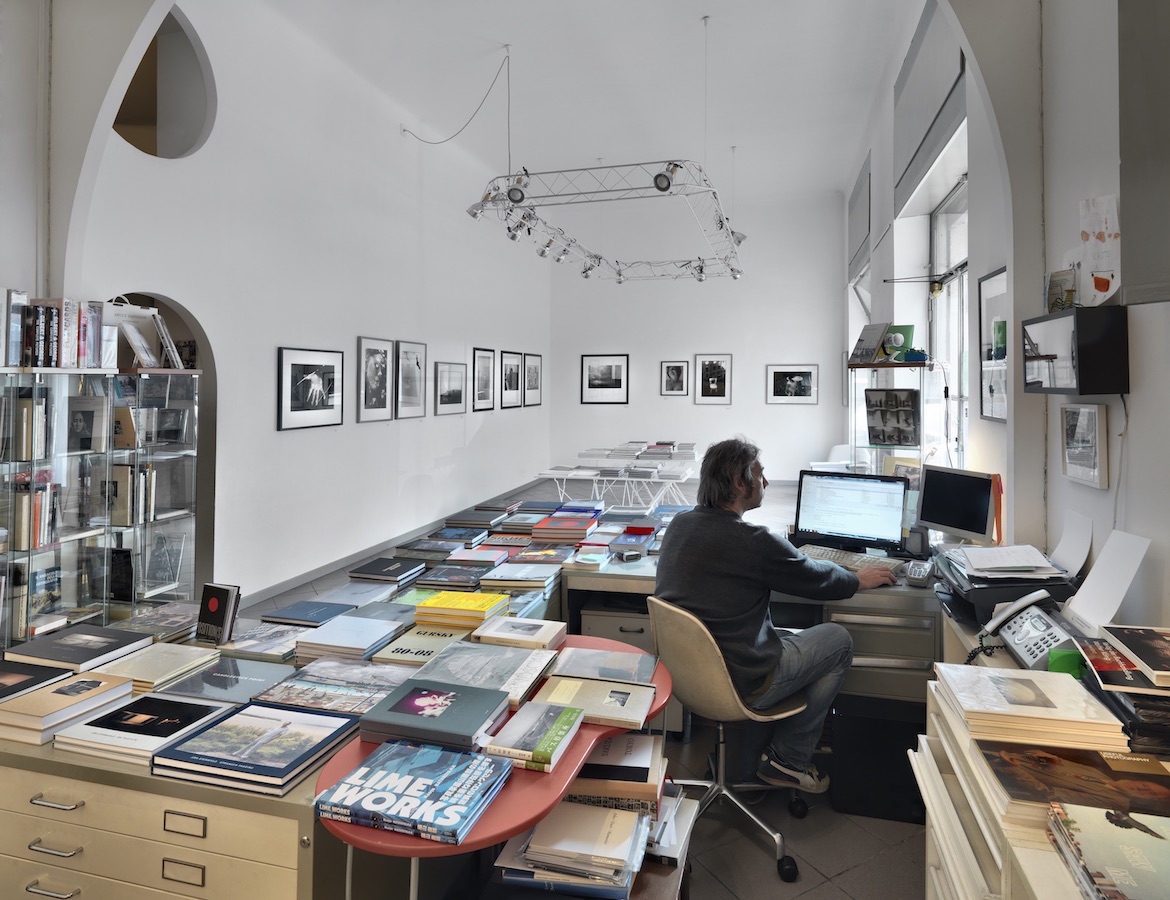
BF: Is most of your customer base in Milan or is it fairs and on-line. I feel like you guys should be publishing somehow. I think that Café Royale imprint is amazing. I need to get the full run someday, but what a great idea-Café Royale for readers is a zine-like publisher in the UK focusing on overlooked British documentary photographers and they come up with incredible material from the past 50-60 years that few people have seen. I could see Micamera doing the same thing for Italy-there must be loads of material out there. So getting back to the questions-who is you direct customer base is it online or 50/50%? Do you see the market (up until CVD-19) as being fairly solid? You have been through the rise of the photobook, so I would be curious where you see it now. I feel it might slouch at some point soon (given the current situation) and I don’t regard that as bad. Maybe I am feeling that there are too many average titles and that the publishers that you mentioned above best exemplify the state of things….What are your thoughts about the commercial side?
GZ: We have been thinking many times of publishing (as of a million other possibilities) and actually we did ‘informally’ release a couple of books. But the older I get, the wiser I become and publishing is a serious matter, made not only of printing and being creative. To be a good publisher there’s so much work involved, I definitely could not do it the way I would like to do it, unless my days would start being longer (and sadly they will not). What I do is trying to help good works finding the right publisher. I would have so much to say about the bookstore / publisher relationship, by the way, and about how I have seen things evolving over this 17 years. But that would be too long now. Rather than publishing, our efforts (and my efforts in particular) are aimed at bringing contemporary photography to Italy. Which should be obvious, but isn’t. An example? I lost the count of how many Steve McCurry exhibitions we had in and around Milan over the last few years. The most interesting exhibitions are usually in smaller galleries – but my wish is that public spaces, museums open to contemporary photography. We have the audience, we miss institutions. We helped Michael Wolf finding his way to Stelline Foundation here in Milan and the exhibition went really well, I hope this becomes a good example. A series of talks – by Marc Feustel, Henk Wildschut, Dana Lixenberg, Stefano Carnelli / Urbiquity Lab, Hannes Wanderer / Peperoni Books and Michael Wolf himself – helped introducing a different, more interesting use of photography to a local audience that responded really well. So you see, it is actually possible! Micamera is a small reality, but in the total absence of anything regarding contemporary photography (at least until very recently), it quickly became a point of reference. And this had the good and the bad sides. Like anything, I suppose. In July I will curate the exhibition by Giulia Iacolutti at PAC – the Contemporary Arts Museum in Milan, which is running a quote extraordinary program since Diego Sileo became curator. PAC is launching a new side space to accompany the main exhibition. It is an amazing opportunity, both for Giulia Iacolutti and for myself. Her work ‘Casa Azul’ is outstanding, the book is released by The(M) éditions / Studio Faganel in 2019. And there will be another exhibition in a place called ‘Casa Testori’ in October with artists Ilaria Turba and Fatima Bianchi. I think we are starting to see the results of the work done. As to fairs: our last fair was Unseen in 2014. I drove to Amsterdam together with Lorenzo Tricoli, who used to collaborate with us. It had been clear for some time already that it didn’t make sense anymore, both economically and time-wise: I ended up standing all day behind a table and had very little time to actually see other books. I prefer to go as a tourist in case. With the bookstore, it might be interesting to participate to collectors’ fairs, like the Paris Vintage Photobook Fair – but we haven’t done it yet. Talking about our market, I think it is pretty solid. We are experiencing a very difficult moment right now, as our life, even online, was very much linked to the shop activity, not only for the customers coming, but also for the events, that boosted sales. Our on-line market is still limited, the website is only in Italian (we are working on this, and now there is at least the possibility of doing the purchase procedure in English). We have the right books, we do not have the perfect structure. Now we quickly have to rearrange things. The good thing is that many customers know us personally and they email for information.
“Our on-line market is still limited, the website is only in Italian (we are working on this, and now there is at least the possibility of doing the purchase procedure in English). We have the right books, we do not have the perfect structure. Now we quickly have to rearrange things. The good thing is that many customers know us personally and they email for information”.
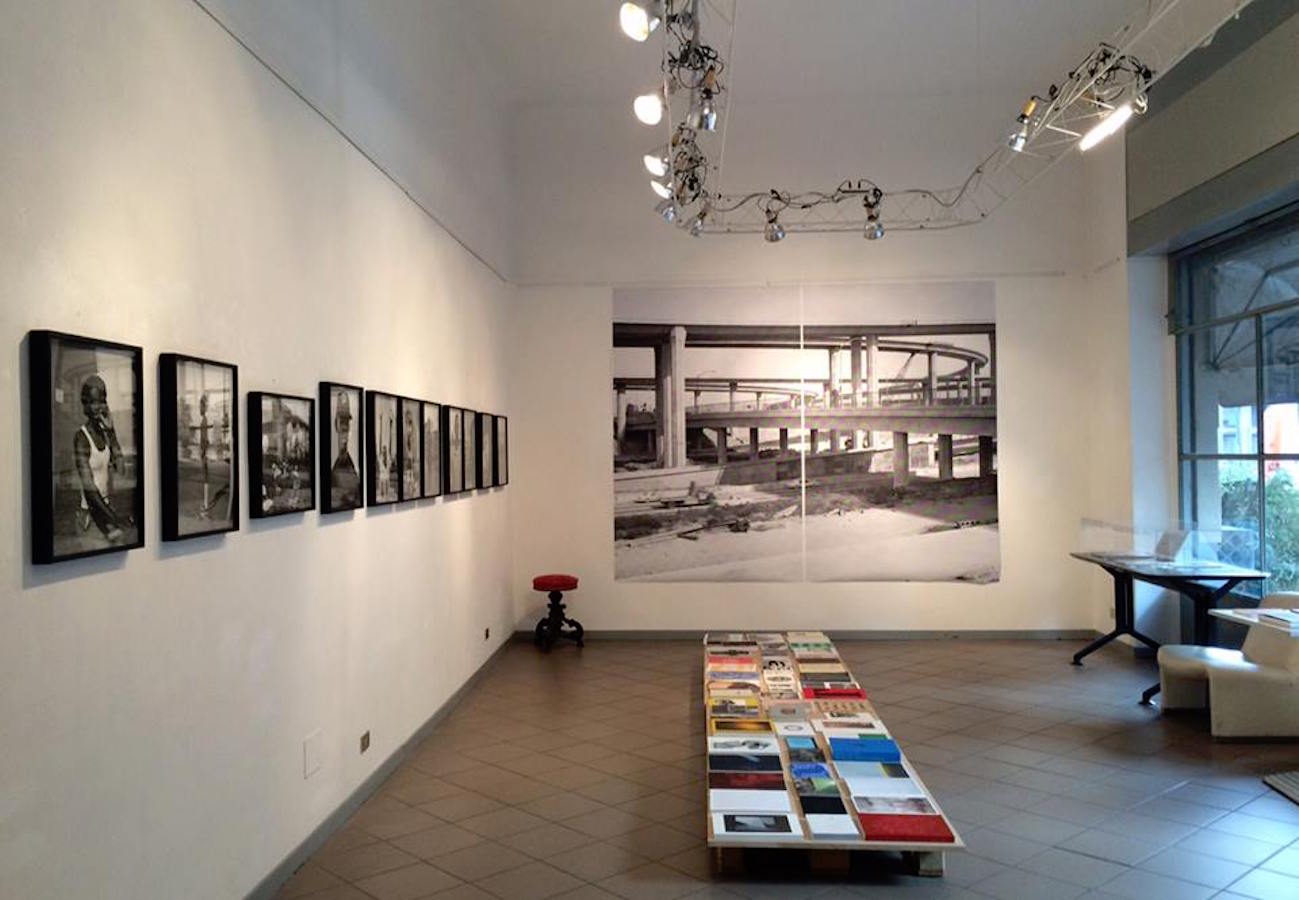
BF: That is great news about the general awareness about contemporary photography in Italy being widened. Contemporary Italian imagery is really poignant and its something that I think remains slightly insular-meaning that I feel it could be out in the world more. There are many talented publishers and artists and I feel that there could be more exposure abroad on the Italian masters as well.
Its good to hear also that you feel the market (minus the plague) is fairly strong. I wasn’T sure, but I do not sell books. At times it feels as though we have too many projects dropping all the time, but maybe that’s from my position as someone who reviews books. May I ask you what excites you about the field right now? Who are you looking at publishing-wise and what artists do you feel should get more exposure? Finally, tell me about 1-2 of your favorite books.
GZ: I might have been unclear: The market is strong in ‘normal’ times but has collapsed right now. The current situation is a little scary. This is also due to the fact that many of our customers are in our same situation. It is as if life had unexpectedly stopped. Lockdown started – progressively – on Feb 22nd here; we are exhausted and starting to feel the psychological impact. In the meantime spring is blossoming, the air is clean and beautiful- A strident contrast. For the first time in Micamera’s life, I am having a really hard time. I think we have a good reputation, we have always paid our debts, and I am counting on the publishers’ and on the bank’s understanding of the current emergency situation.
You ask me what excites me now in the field. Following the world of publishing is sometimes like surfing, and waves can change dramatically. For example, the years of self-publishing were very chaotic and creative, but also exhausting – then the market changed again, and the scene is more quiet again – but radically different. It is easier for me to think of what I particularly liked recently. For example, we bought some titles from Roland Angst (only photography) and I rediscovered the beauty of them: ‘The Adolescent Comedy’ by Joseph Sterling or ‘Early Black and White’ by Marvin Neuman. Amazing books, beautifully designed and printed. Every good publisher has his own way of doing things and Roland asks the photographer to trust him completely, not intervening in the bookmaking process. It’s a possibility, and the results are, in his case, outstanding. On the other hand I think that Carmen Winant’s “Notes on Fundamental Joy; seeking the elimination of oppression through the social and political transformation of the patriarchy that otherwise threatens to bury us” (Printed Matter, 2019) is one of the most interesting books currently on our tables. Her work with archival images, addressing the issue of feminism, is not only interesting but also wonderfully translated in the book-object: the light, almost transparent pages, her voice on the bottom following the sequence…simply perfect. I learned to appreciate her work recently, I knew and had ‘My Birth’ (SPBH Editions, 2018), but it was this one that made me really love her. Micamera’s favourite publisher now is TBW Books: we are planning a pop-up store with them in fall. They release few titles, and they are all fantastic. In Europe, of course MACK is a leading imprint for us – also (but not only) because he publishes Ghirri and Guidi’s work. By the way, Lunario is pretty much surprising, don’t you think so? I find it beautiful to show the earlier, playful work of a ‘serious’ author like Guidi. I was very much looking forward to Jason Fulford’s new book that we were meant to present in May. Hopefully we will manage to do it later.
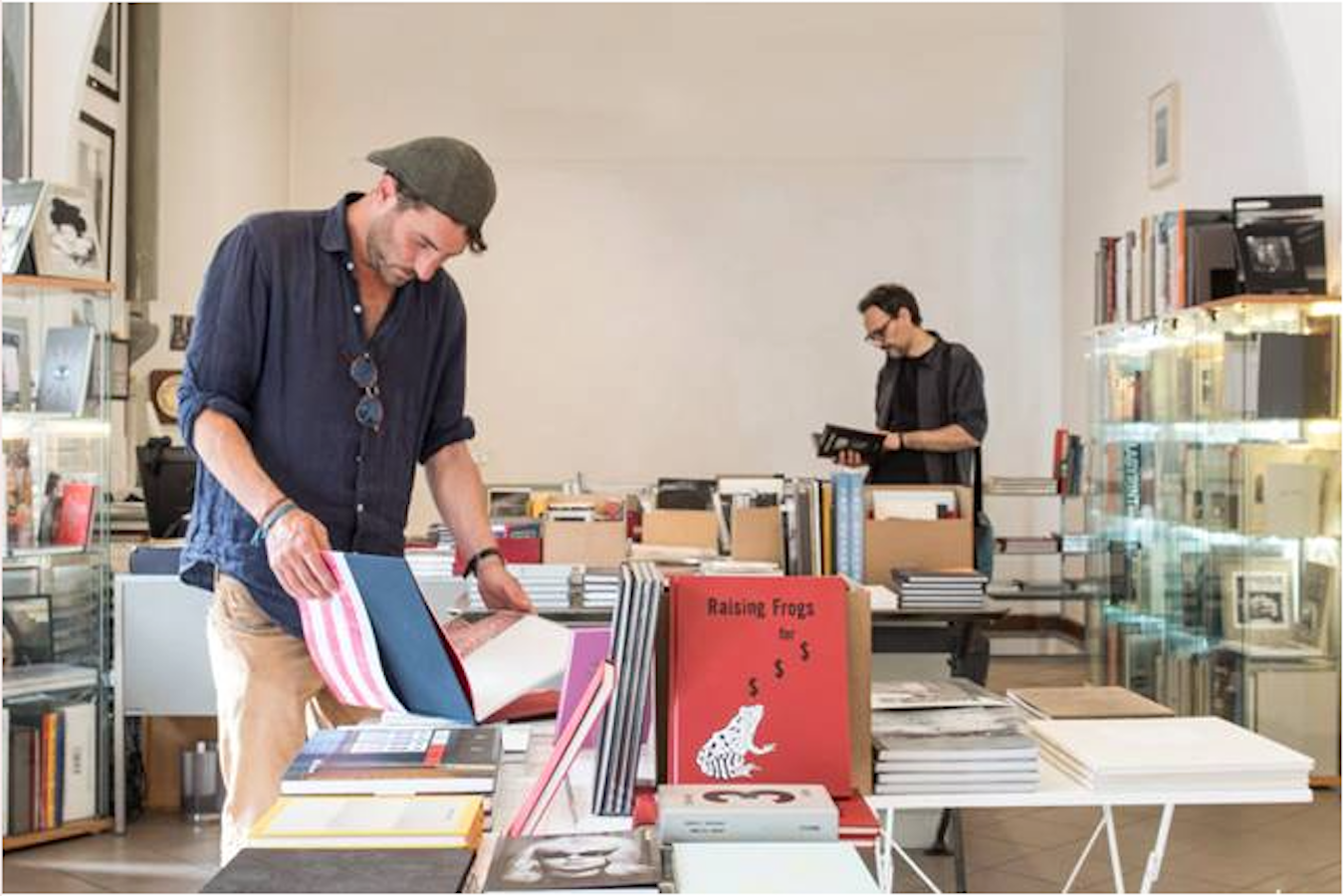
BF: Yes, I suspected that the market was strong, but it feels more calculated in general terms with great publishers like MACK, Stanley/Barker, TBW; The Ice Plant, RRB, Chose Commune, Loose Joints, VOID. There are some great talents, but it certainly feels like there is less self-produced material trying to command attention and I personally feel that a focus on consistency is very important.
As to Lunario-that was my intro to Guidi. So, I knew it wasn’t the normal thing for him. I thought of it as a “bucket list” project, but seeing his playfulness there opened his other work up to me, made me pay more attention. I am just now starting to seek out his books and have lots to learn about all things Italian.
In closing, I am looking forward to a time when Micamera’s doors open and we can continue this business of photography books. May you and yours remain safe and strong in such repelling times.
Thank You!
You can find the link to Micamera below. Please support the shops!
